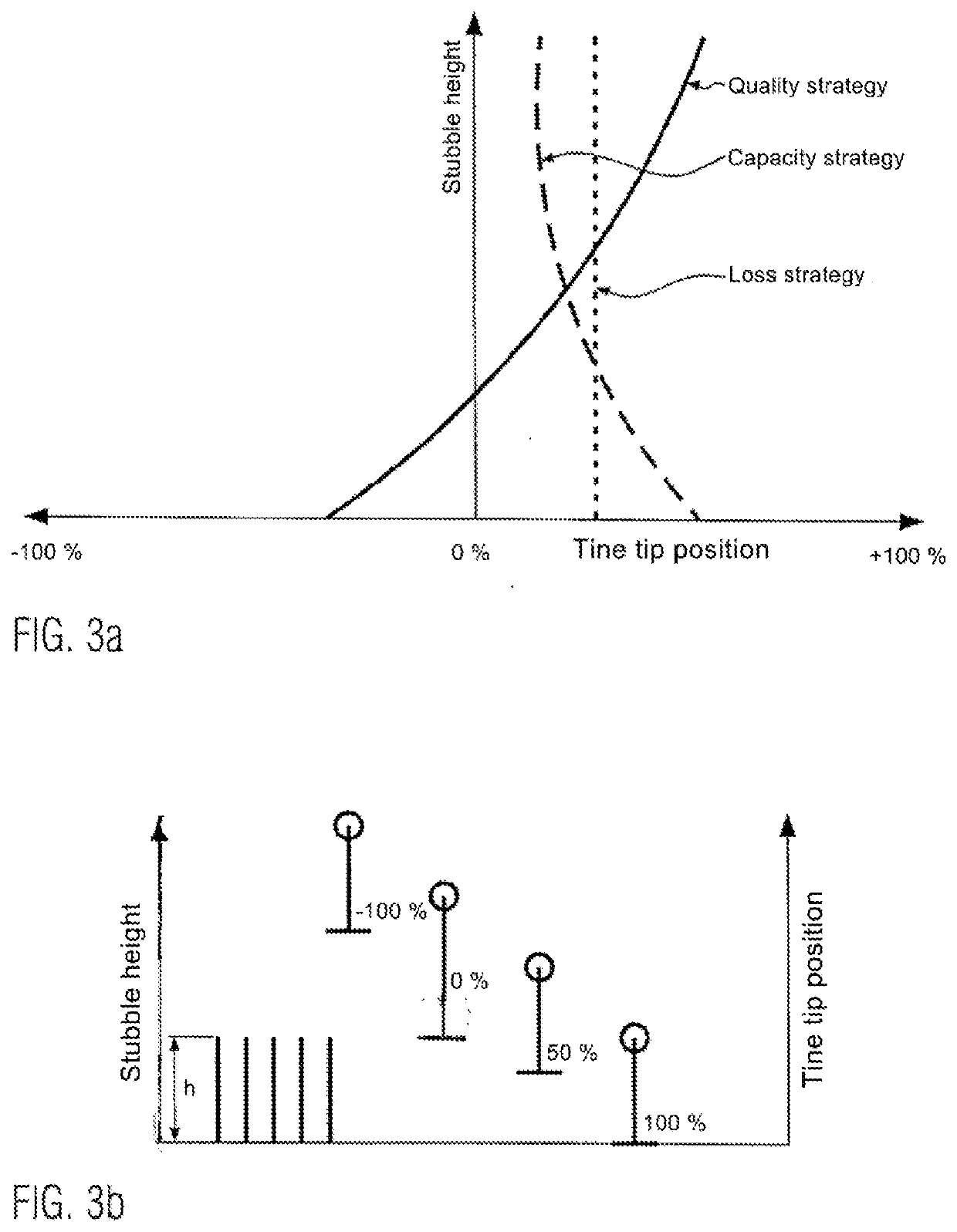Agricultural working apparatus
a technology for working equipment and agricultural machinery, applied in agricultural machines, agricultural tools and machines, adjusting devices, etc., can solve the problems of unsatisfactory contamination, energy loss, and ash and soil proportion in forage, and achieve the effect of reducing the energy content of animal forage, and reducing the energy content of forag
- Summary
- Abstract
- Description
- Claims
- Application Information
AI Technical Summary
Benefits of technology
Problems solved by technology
Method used
Image
Examples
Embodiment Construction
[0039]FIG. 1 shows roughly schematically an agricultural working apparatus 1 for use in forage harvesting in the form of a swather 1. The swather 1 has a rotary rake 16 which is attached to a support arm. The swather has a rotor housing 17 which is rotatably mounted about the rotor axis A and is driven in a known manner by a gear, for example a bevel gear, which is mounted in a corresponding gear housing. Tine arms 13 are mounted in openings 18 of the rotor housing 17 that are uniformly distributed around the circumference and are driven by the rotor housing 17. On the tine arms 13, the rake tines 7 are arranged at an angle. At the other end of the tine arms 13, levers 14 are arranged, for example, at an angle, in particular roller levers 14 (see FIG. 5), which rotate on a cam track 19. The pivot angle about the longitudinal axis L of the tine arm 13 can be changed during the revolution about an axis A, that is, the tines 7 can be pivoted into a working position (see left of FIG. 1)...
PUM
 Login to View More
Login to View More Abstract
Description
Claims
Application Information
 Login to View More
Login to View More - R&D
- Intellectual Property
- Life Sciences
- Materials
- Tech Scout
- Unparalleled Data Quality
- Higher Quality Content
- 60% Fewer Hallucinations
Browse by: Latest US Patents, China's latest patents, Technical Efficacy Thesaurus, Application Domain, Technology Topic, Popular Technical Reports.
© 2025 PatSnap. All rights reserved.Legal|Privacy policy|Modern Slavery Act Transparency Statement|Sitemap|About US| Contact US: help@patsnap.com



